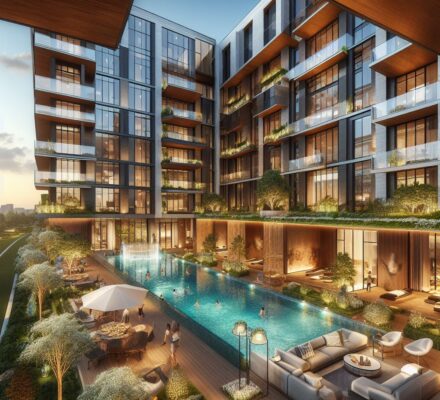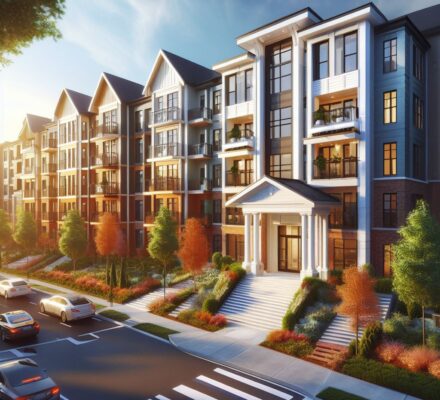Are you ready to unlock the secrets to maximizing your returns in multifamily investments? Look no further.
This article will guide you through the value-add strategies that can take your investment to the next level. From identifying opportunities to implementing renovations, enhancing property management practices, leveraging technology, and creating community and amenities, we will provide you with the analytical insights and objective advice you need to succeed in this competitive market.
Get ready to unleash the full potential of your multifamily investment.
Key Takeaways
- Thorough market research is essential to understand demand and supply dynamics, population growth, employment rates, and rental market trends.
- Renovations and upgrades should be prioritized based on ROI potential and a realistic budget should be set and adhered to. Qualified contractors with experience in multifamily renovations should be hired.
- Effective property management practices include implementing communication strategies, establishing clear channels for tenant outreach, sending regular updates, and utilizing online portals or mobile apps for convenient access to information.
- Leveraging technology can improve efficiency by integrating smart home technology, utilizing cloud-based property management software, leveraging data analytics tools, implementing online leasing platforms, and using virtual tour technology.
Identifying Value-Add Opportunities
You can identify value-add opportunities in multifamily investments by conducting thorough market research and property analysis.
Market research is crucial in understanding the demand and supply dynamics in the area where the multifamily property is located. By analyzing factors such as population growth, employment rates, and rental market trends, you can determine the potential for rental income growth and increased property value. Additionally, analyzing the competition in the market will help you identify areas where you can differentiate your property and add value.
Property analysis involves a detailed examination of the physical condition of the property, including its age, maintenance history, and any potential deferred maintenance issues. By identifying areas of improvement, such as outdated amenities or inefficient systems, you can develop a plan to address these issues and enhance the property’s value.
Furthermore, analyzing the current tenant base and their needs can present opportunities for value-add strategies. For example, if the majority of tenants are young professionals, adding amenities like co-working spaces or fitness centers can attract higher-paying tenants and increase rental income.
Implementing Renovation and Upgrades
To effectively implement renovation and upgrades in multifamily investments, it’s important to develop a strategic plan. This will ensure that the renovations are completed efficiently and effectively, maximizing the return on investment.
Here are some key steps to consider when implementing renovation and upgrades:
- Conduct a thorough property assessment: Before starting any renovations, it’s essential to evaluate the current condition of the property. This assessment will help identify areas that require immediate attention and determine the scope of the renovation project.
- Prioritize renovations based on ROI potential: Not all renovations will yield the same return on investment. It’s crucial to prioritize renovations that will have the most significant impact on the property’s value and rental income.
- Set a realistic budget: Renovations can be expensive, so it’s essential to set a realistic budget and stick to it. Consider the cost of materials, labor, permits, and any unexpected expenses that may arise during the renovation process.
- Hire qualified contractors: To ensure the renovations are completed to a high standard, it’s crucial to hire qualified contractors who’ve experience in multifamily renovations. Conduct thorough research and obtain multiple quotes before making a decision.
- Communicate with tenants: Renovations can be disruptive for tenants, so it’s important to communicate with them throughout the process. Provide clear timelines, address any concerns, and minimize disruptions as much as possible.
Enhancing Property Management Practices
One key aspect of enhancing property management practices in multifamily investments is implementing effective communication strategies with tenants. Communication is vital for building strong relationships with tenants and addressing their needs and concerns in a timely manner. A proactive approach to communication can lead to increased tenant satisfaction and retention rates, ultimately contributing to the overall success of the investment.
To enhance communication, property managers can establish clear channels for tenants to reach out, such as a dedicated email address or phone line. Regular newsletters or updates can also be sent to keep tenants informed about any property-related matters or upcoming events. Additionally, implementing an online portal or mobile app can provide tenants with convenient access to important documents, maintenance requests, and community updates.
Another important aspect of property management is effective maintenance and repairs. Property managers should establish a proactive maintenance schedule to prevent issues before they occur. Regular inspections can help identify potential problems and ensure that the property is well-maintained. Prompt response to maintenance requests is crucial to tenant satisfaction and can help prevent further damage to the property.
Leveraging Technology for Efficiency
Implementing technology solutions can greatly enhance property management practices and increase efficiency in multifamily investments. Leveraging technology allows property managers to streamline processes, automate tasks, and improve communication with tenants and stakeholders.
Here are five ways technology can be leveraged for efficiency in multifamily investments:
- Smart Home Technology: By integrating smart devices such as thermostats, door locks, and lighting systems, property managers can remotely manage and control these devices, reducing energy consumption and enhancing security.
- Property Management Software: Utilizing cloud-based property management software enables managers to automate tasks like rent collection, maintenance requests, and lease renewals, saving time and reducing errors.
- Data Analytics: Leveraging data analytics tools provides valuable insights into tenant preferences, market trends, and property performance, allowing property managers to make informed decisions and optimize rental rates.
- Online Leasing Platforms: Implementing online leasing platforms simplifies the leasing process, enabling prospective tenants to view and apply for available units, reducing paperwork and expediting the rental process.
- Virtual Tours: Utilizing virtual tour technology allows property managers to showcase units to potential tenants remotely, saving time and resources while providing an immersive experience.
Creating Community and Amenities
As you continue to leverage technology for efficiency in your multifamily investments, it’s crucial to focus on creating community and amenities that enhance the overall living experience.
Building a strong sense of community within your multifamily property not only improves tenant satisfaction but also increases retention rates and attracts new residents.
One way to foster a sense of community is by providing shared spaces and amenities that encourage social interaction. Common areas such as lounges, rooftop gardens, and fitness centers can serve as gathering places for tenants, facilitating connections and fostering a sense of belonging.
Additionally, organizing community events and activities can further strengthen the bonds between residents. These events can range from fitness classes and cooking workshops to movie nights and networking events.
By creating a vibrant and engaging community, you not only enhance the overall living experience but also differentiate your property from competitors.
Successful multifamily investments recognize the importance of amenities beyond the individual units themselves. They prioritize the creation of spaces and experiences that promote socialization, well-being, and a sense of belonging, ultimately increasing tenant satisfaction and property value.
Frequently Asked Questions
What Are the Typical Challenges Faced When Identifying Value-Add Opportunities in Multifamily Investments?
When identifying value-add opportunities in multifamily investments, typical challenges you face include identifying properties in need of renovation, accurately estimating the costs and potential returns, and managing the construction process efficiently.
How Can Investors Effectively Implement Renovation and Upgrades in Their Multifamily Properties?
To effectively implement renovation and upgrades in your multifamily properties, you need a meticulous plan. Start by assessing the property’s needs, setting a budget, and hiring reliable contractors. Attention to detail is key to maximizing value.
What Are Some Best Practices for Enhancing Property Management Practices in Multifamily Investments?
To enhance property management practices in multifamily investments, focus on efficient rent collection, proactive maintenance, and effective communication with tenants. Implementing technology, conducting regular property inspections, and providing excellent customer service are also key strategies to consider.
How Can Technology Be Leveraged to Improve Efficiency in Managing Multifamily Properties?
Leverage technology to boost efficiency in managing multifamily properties. Streamline operations with property management software for tasks like tenant screening, rent collection, and maintenance tracking. Embrace automation to save time and improve overall productivity.
What Are Some Innovative Ways to Create a Sense of Community and Provide Amenities in Multifamily Properties?
Looking to create a sense of community and provide amenities in multifamily properties? How about incorporating shared spaces, such as a rooftop lounge or a communal garden, to encourage interaction and enhance the overall living experience?




